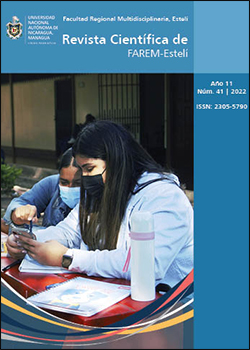Modeling of geophysical parameters by a seismic source capable of generating a tsunami off the coast of Pochomil, Nicaragua
DOI:
https://doi.org/10.5377/farem.v11i41.13891Keywords:
Tsunami, strike, dip, slip, magnitude, depth, stiffnessAbstract
In this investigation, the geophysical parameters (strike, slip, dip, fault type, stiffness, depth, seismic rupture dynamics, tsunami generation and propagation) of ground motion due to a block-slip earthquake such as the one that occurred in 1992 off the coast of Leon. These parameters are associated with three-dimensional vertical and horizontal time-dependent ground motions of spontaneous dynamic rupture models leading to the generation of a tsunami as a latent threat to the Pochomil coast. For this purpose, the TUNAMI-N2 Code software modified by Yanagisawa (2018) was used, based on the geophysical parameters calculated by the United States Geological Survey (USGS), the Global Centroid-Moment-Tensor Project (GCMT), and Tanioka et al. 2017, with magnitude 7.7 Mw. From the modeling results, the highest amplitude wave generating event was caused by a reverse fault plane, with magnitude 8.0 Mw, stiffness 15 GPa, depth 10 km, dip 80.8°, dip 87.2°, and slip 118°. The wave propagation model generated a height of 14.2 m and an arrival time of 35 minutes.
Downloads
285
HTML (Español (España)) 157
Published
How to Cite
Issue
Section
License
Copyright (c) 2022 Revista Científica de la FAREM-Estelí

This work is licensed under a Creative Commons Attribution-NonCommercial-ShareAlike 4.0 International License.
© Revista Científica de FAREM-Estelí

